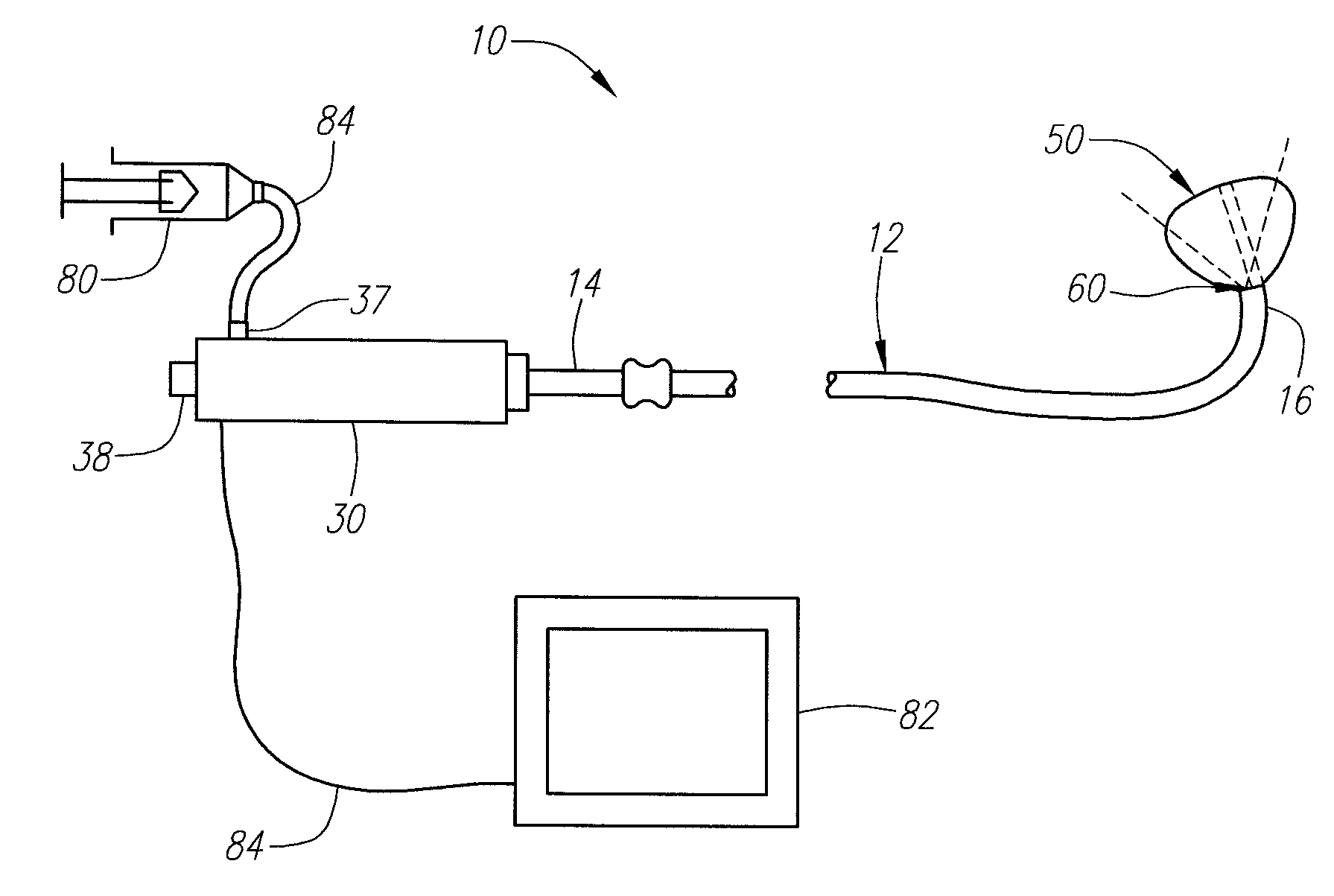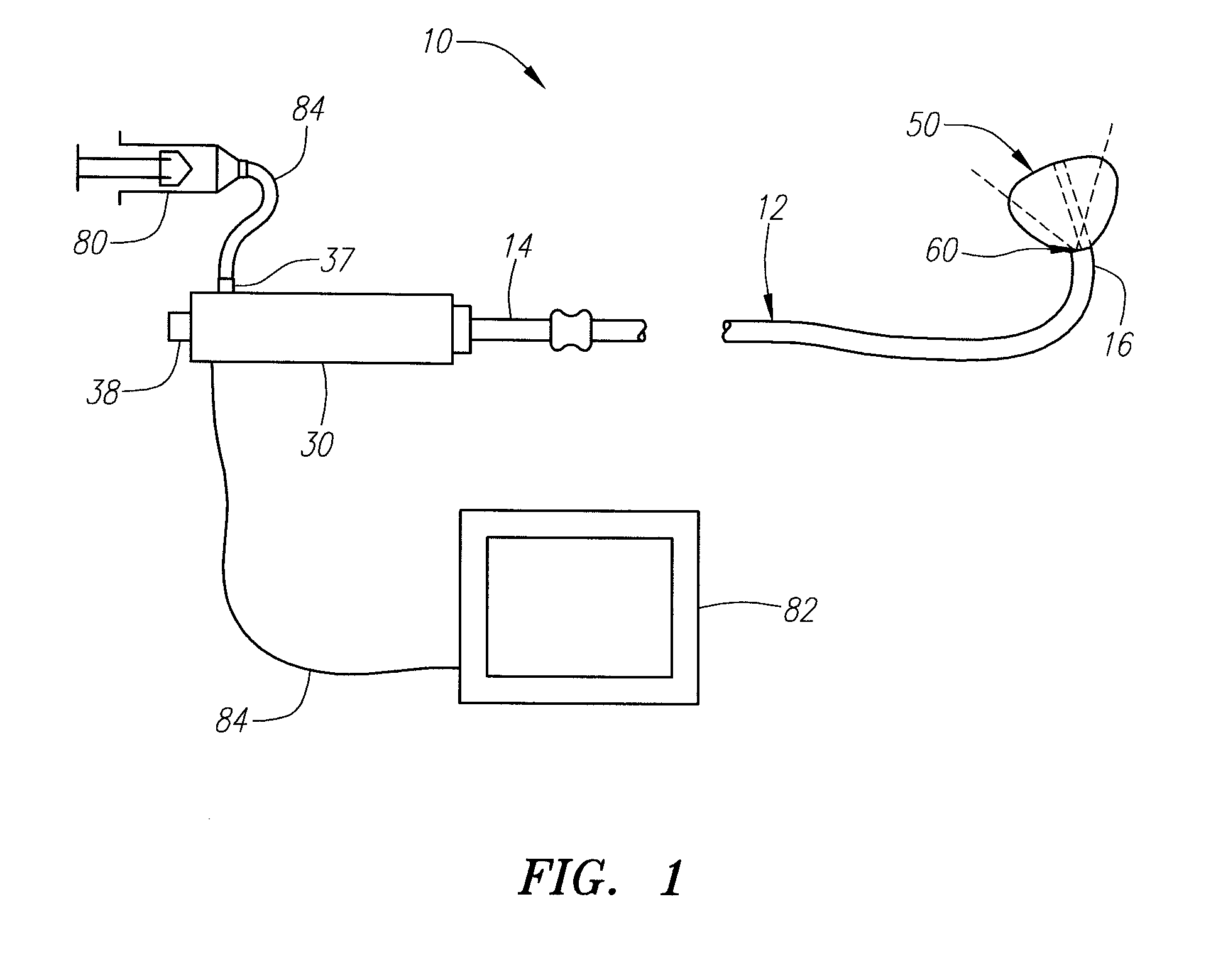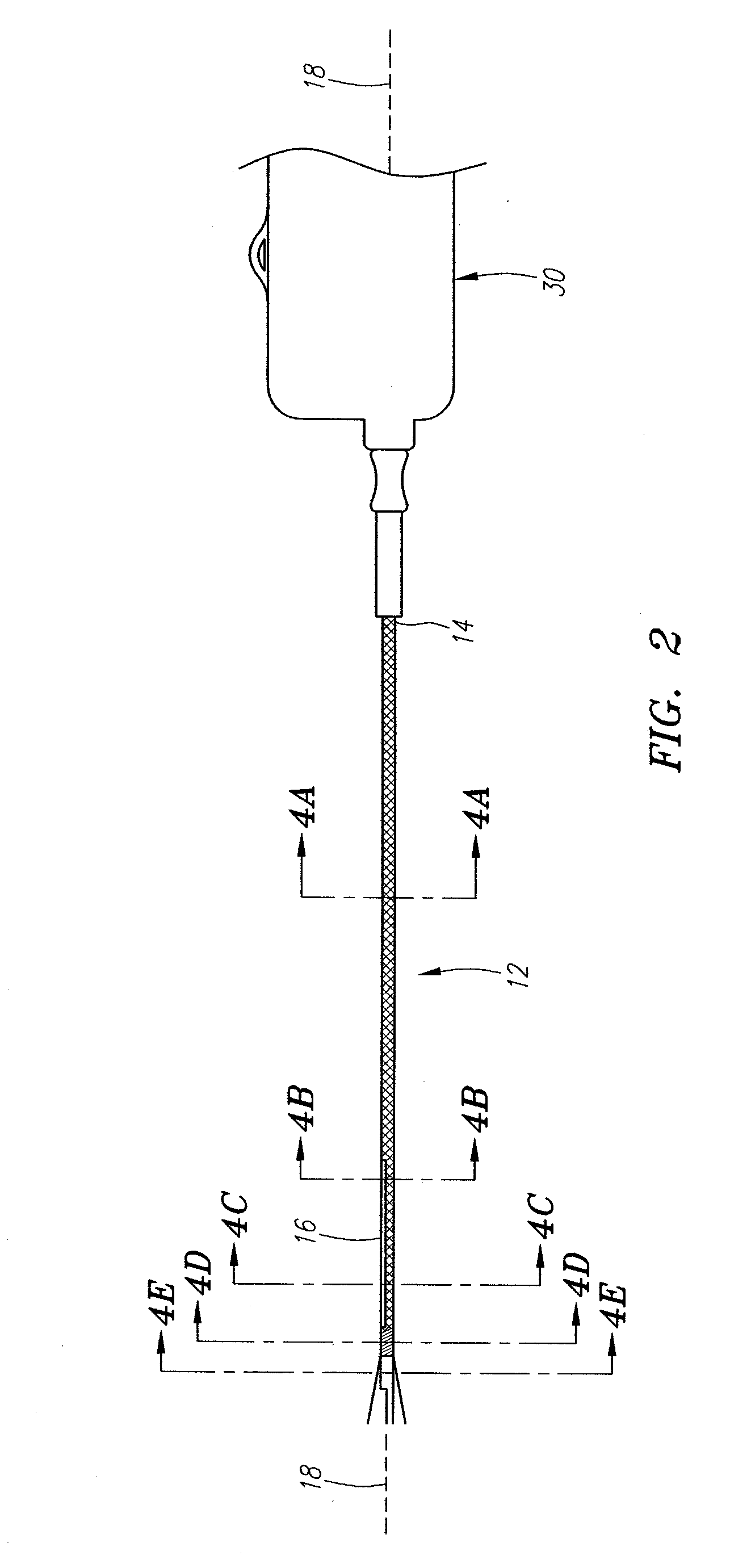Complex Shaped Steerable Catheters and Methods for Making and Using Them
a catheter and complex technology, applied in the field of catheters, can solve the problems of difficulty in accessing the coronary sinus in patients undergoing such procedures, difficulty in and difficulty in obtaining the available devices, so as to promote the ease of understanding the position of the tip
- Summary
- Abstract
- Description
- Claims
- Application Information
AI Technical Summary
Benefits of technology
Problems solved by technology
Method used
Image
Examples
first embodiment
[0053] Turning to the drawings, FIGS. 1-3 show an apparatus 10 for imaging a body lumen, e.g., for visualizing, cannulating, and / or accessing a body lumen from a body cavity (not shown). As explained further below, the apparatus 10 may be used for imaging a wall of a body lumen, e.g., a right atrium of a heart, e.g., for visualizing, accessing, and / or cannulating a coronary sinus ostium. Alternatively, the apparatus 10 may be used for visualizing, accessing, and / or cannulating other body lumens, e.g., for delivering one or more therapeutic and / or diagnostic agents into tissue, and / or for puncturing through tissue to access a region beyond the punctured tissue. As used herein, “body lumen” may refer to any passage within a patient's body, e.g., an artery, vein, or other blood vessel, or a body cavity, such as a chamber within a patient's heart, e.g., a ventricle or atrium. Although exemplary embodiments are described herein, additional information that may relate to the structure and...
second embodiment
[0077] Turning to FIGS. 11-14, a distal end 216 of a catheter 212 is shown, which may be constructed generally similar to the previous embodiments described herein. FIG. 11 shows the distal end 216 in a substantially straight, relaxed configuration. In FIGS. 12 and 13, the distal end 216 has assumed a complex curved configuration, e.g., upon actuation of a steering mechanism (not shown). The complex curved configuration may include a gradual curved portion 216a that extends out of a plane, and a twisted portion 216b distal to the gradual curved portion 216a. As best seen in FIG. 13, the twisted portion 216b may resemble a portion of a corkscrew or helical shape, while the gradual curved portion 216a may have a generally “J” shape. Thus, the distal end 216 may resemble a corkscrew or helical twist in the complex curved configuration that may allow the catheter 212 to extend through varying geometrical shapes of anatomy, e.g., through a patient's right atrium into a coronary sinus. Op...
third embodiment
[0079] Referring to FIG. 15-19, a third embodiment is shown of a catheter 212 that generally includes a proximal end (not shown) and distal end 316 sized for introduction into a body lumen, similar to the previous embodiments. The distal end 316 is shown in a relaxed configuration in FIGS. 15 and 16, and in a complex curved configuration in FIGS. 17 and 18. In the relaxed configuration, the distal end 316 includes a slightly curved shape in two planes, as shown in FIGS. 15 and 16. In the complex curved configuration, the distal end 316 assumes a curvilinear shape, including a first gradual curve 316a within a first plane, and a second smaller curve 316b within a single plane that intersects the first plane. FIG. 19 shows the distal end 316 in another complex curved configuration created by actuating an internal steering adjustment member, as described elsewhere herein.
[0080] Optionally, any of the embodiments described herein may include a substantially transparent expandable member...
PUM
 Login to View More
Login to View More Abstract
Description
Claims
Application Information
 Login to View More
Login to View More - R&D
- Intellectual Property
- Life Sciences
- Materials
- Tech Scout
- Unparalleled Data Quality
- Higher Quality Content
- 60% Fewer Hallucinations
Browse by: Latest US Patents, China's latest patents, Technical Efficacy Thesaurus, Application Domain, Technology Topic, Popular Technical Reports.
© 2025 PatSnap. All rights reserved.Legal|Privacy policy|Modern Slavery Act Transparency Statement|Sitemap|About US| Contact US: help@patsnap.com



